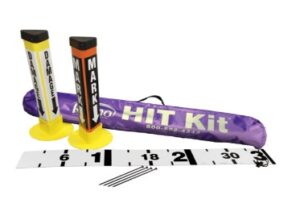
When damage occurs to buried facilities like fiber optic cable pipelines, optic cable pipelines, electrical lines, water and sewer lines, and more, it’s crucial to accurately record damage to avoid unnecessary and costly legal actions. Rhino Markers understands the importance of a comprehensive approach to such incidents. Our HIT kit has become a standard tool to record every detail of the damage, ensuring investigation enables consistent documentation across various scenarios.
Here, we will walk you through the process of using a HIT kit effectively, enhancing your ability to conduct root cause investigations and enhance root cause investigations.
How Do I Use a HIT Kit?
Utilizing a HIT kit correctly is pivotal in ensuring all aspects of the damage are meticulously recorded. This not only aids in understanding what happened but also in preventing future occurrences. Let’s dive into the specifics of using a HIT kit.
Place “Damage” Marker Close to Damage Location
The first step in using a HIT kit is to place a “Damage” marker as close to the actual site of damage as possible. This serves as an initial point of reference for the documentation process, allowing for a better perspective when analyzing the damage.
Place “Mark” Post Perpendicular From the Damage
Subsequently, place a “Mark” post perpendicular from the damage. This alignment is crucial for creating a clear demarcation of the damage extent and serves as a standard tool for spatial orientation during the documentation process.
Place Additional “Mark” Posts Along Locate Line
Continuing, it’s essential to place additional “Mark” posts along the locate line. This step ensures that the entire affected area is covered, allowing for a comprehensive record damage to buried infrastructure.
Place “0” Mark By the Damage and Extend Out Towards First Mark Post
Placing a “0” mark by the damage and extending out towards the first Mark post helps in creating a starting point for measurements. This methodical approach aids in accurately recording damage, offering a quantifiable analysis of the incident.
Document the Damage and Treat Area Like a Clock
Documenting the damage and treating the area like a clock is a unique approach that Rhino Markers recommends. This involves photographing the excavation site from different angles, giving a better perspective and ensuring all details are captured.
Document Surroundings and Include Street Signs, Vehicles, Equipment, Witnesses, and Anything of Importance
Finally, it’s not just the immediate area of damage that requires documentation but also the surroundings. Including street signs, vehicles, equipment, witnesses, and anything of importance in your documentation can enhance root cause investigations and reduce unnecessary future disputes.
Rhino Markers’ HIT kit is a comprehensive tool to record every detail of damage to buried facilities. By following the steps outlined above, you can ensure that you have comprehensive documentation. This not only helps in accurately recording damage but also significantly reduces unnecessary and costly legal actions.
Contact Us Now for More Information
Don’t wait for the next incident to occur. Contact us today to learn more about the Rhino HIT kit and how it can transform your approach to documenting damage. Let’s work together to protect your infrastructure, increase safety, and reduce the likelihood of future accidents.



